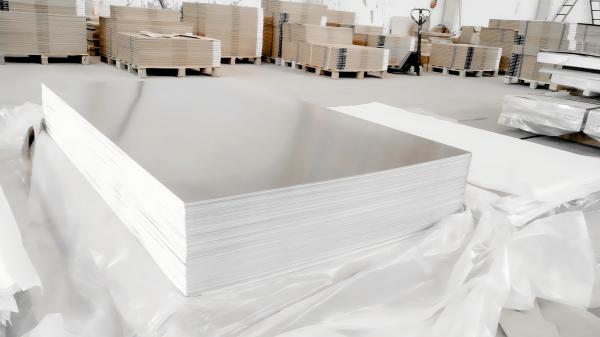In aluminum procurement, material thickness requirements vary significantly - from 0.2mm precision packaging materials to 20mm marine-grade products. This underscores the importance of accurate product classification.
Primary differentiator is thickness: foil (≤0.2mm), sheet (0.2-6mm), plate (>6mm). These parameters directly affect material formability and load-bearing capacity. Thin gauges suit stamping processes, while thicker plates provide structural support.
Misclassification often leads to application failures. We analyze three critical dimensions: industry standards, manufacturing processes, and application scenarios.
1. How Does Thickness Define Product Classification?
ASTM B209 establishes clear boundaries:
- Foil: cold-rolled products ≤0.2mm
- Sheet: 0.2-6.3mm rolled products
- Plate: >6.3mm hot-rolled products
For 3003 alloy, tensile strength increases 118% when thickness grows from 0.5mm to 8mm.

Technical Specification Matrix
| Parameter | Foil | Sheet | Plate |
|---|---|---|---|
| Thickness | ≤0.2mm | 0.2-6.3mm | >6.3mm |
| Process | Double Rolling | Cold Rolling | Hot Rolling |
| Surface | Mirror | Matte | Mill Finish |
| Tolerance | ±0.005mm | ±0.1mm | ±0.5mm |
Production data shows: 8mm plates require 45% longer annealing time than standard products to ensure stable mechanical properties.
2. How Do Applications Determine Material Selection?
Different industries demand specific technical attributes. Architectural curtain walls typically use 3-5mm sheets balancing strength/weight, while marine decks require superior corrosion resistance.

Selection Criteria
Construction Specifications:
- Curtain walls: 2-4mm 3003/5052 alloys
- Insulation: 0.08-0.15mm foil composites
- Structural frames: 6-10mm 6061-T6 plates
Marine Material Requirements: - Corrosion resistance: MIL-DTL-24149 compliance
- Weldability: Al-Mg alloys preferred
- Flatness: <2mm/m tolerance
3. What Are Critical Quality Control Measures?
Establish comprehensive inspection protocols:
Essential Checks:
- Dimensional accuracy (thickness/width/flatness)
- Mechanical properties (tensile/bend/hardness)
- Surface defects (scratches/discoloration)
Specialized Testing:
- Food-grade: heavy metal migration tests
- Aerospace: macrostructure examination
- Marine: salt spray corrosion testing

Conclusion
Accurate differentiation requires evaluating thickness parameters, manufacturing processes, and application needs. As an ISO/IEC 17025 certified supplier, we recommend specifying these in procurement agreements: thickness tolerance, surface finish requirements, mechanical property targets. This facilitates optimal material selection and risk mitigation. Our technical support services include material selection guidance and certification documentation to enhance procurement efficiency.

